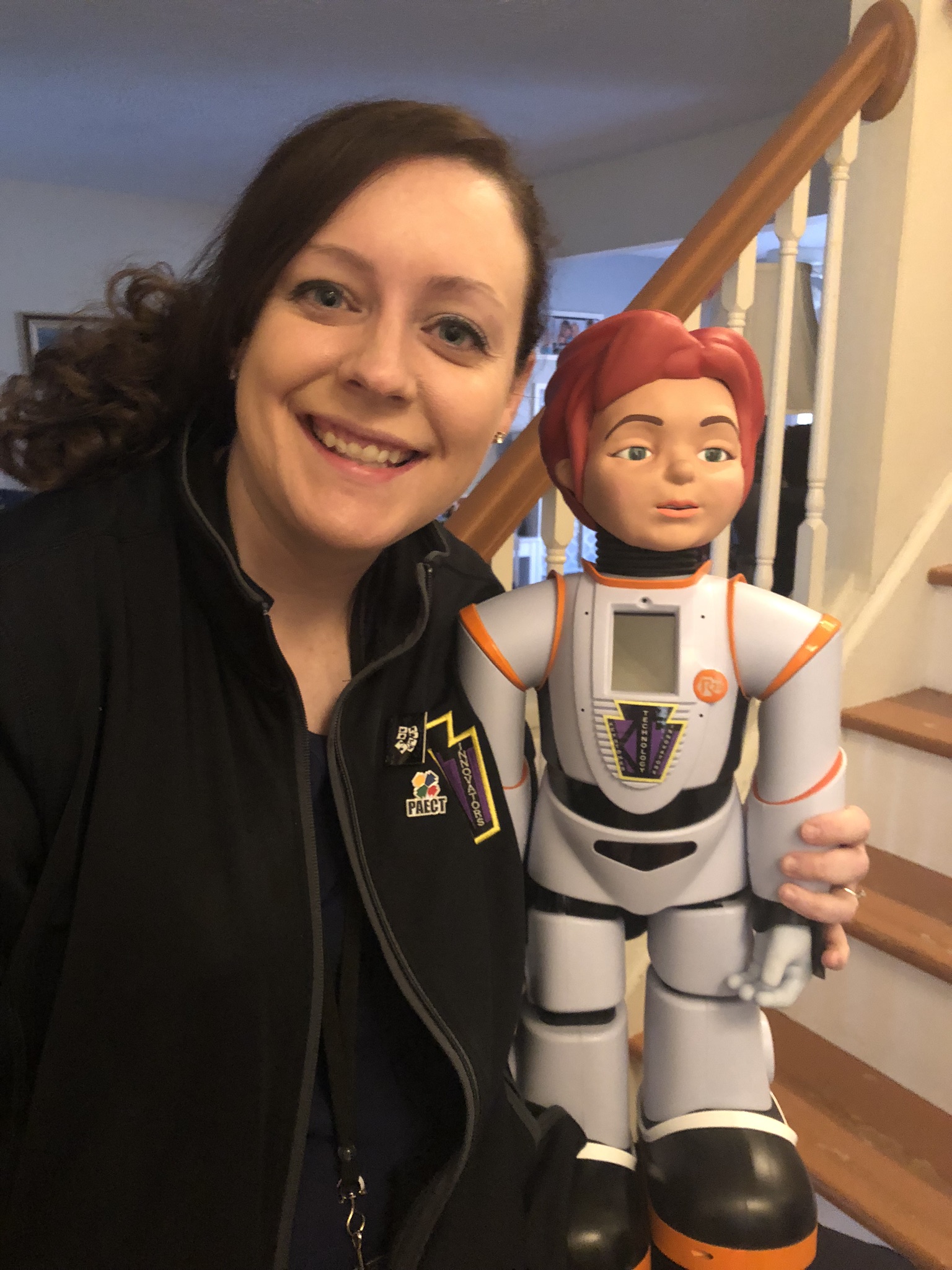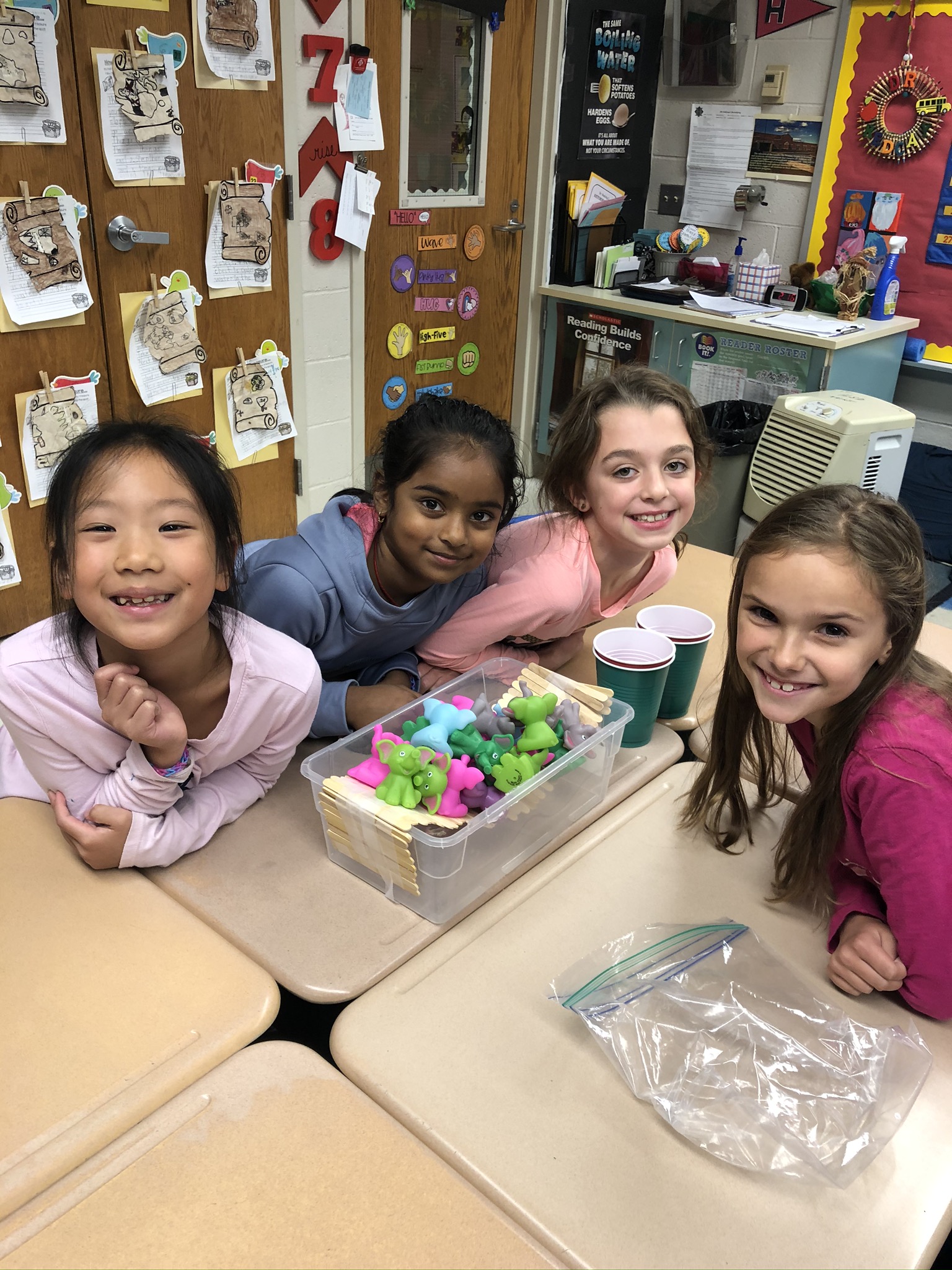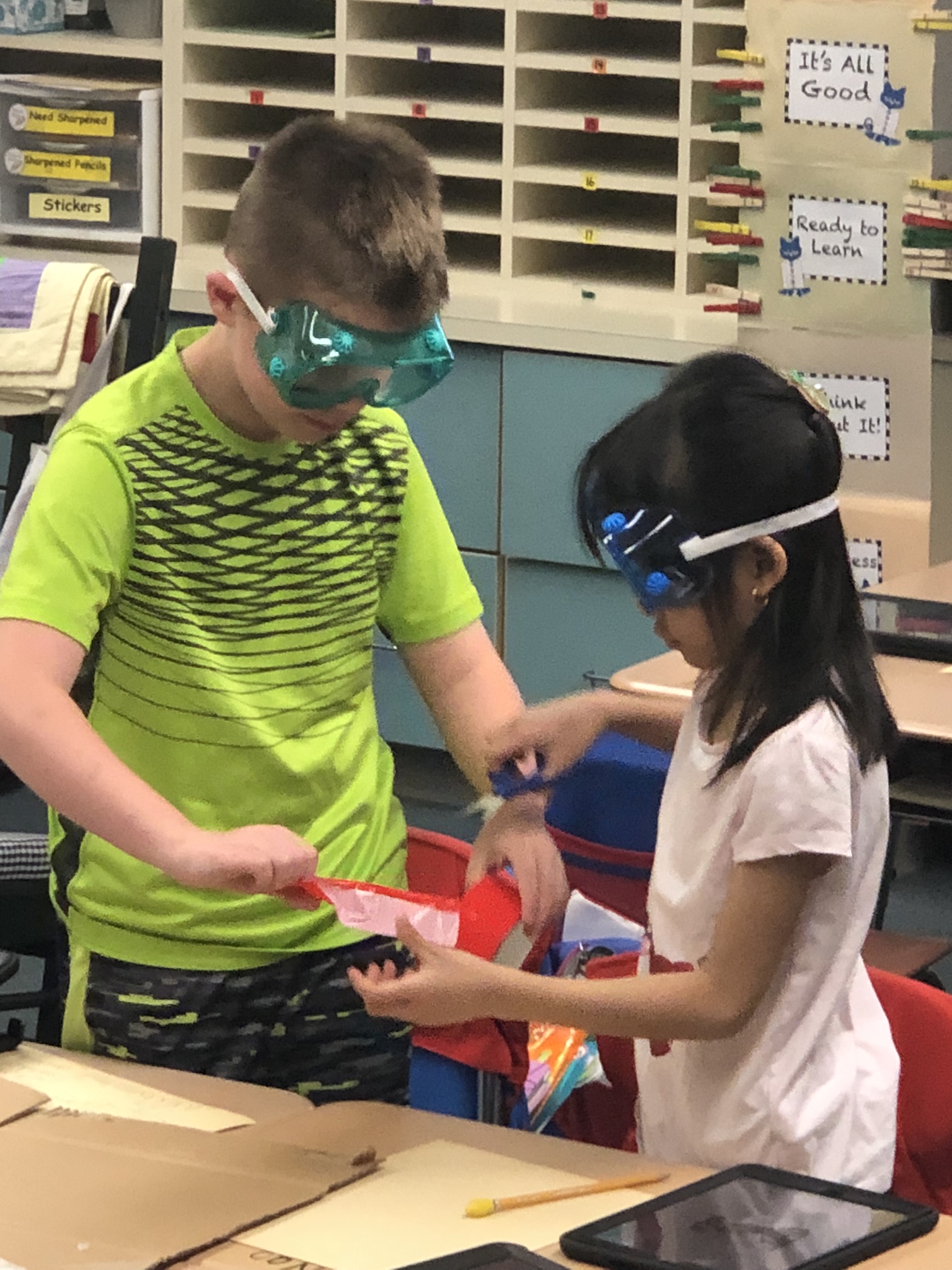"At 211 degrees water is hot. At 212 degrees water boils, and with boiling water comes steam" (Parker & Anderson, 2016). STEAM moves things. In 2018, I attended the
Keystone Technology Innovator Star Summit. I gained a lot from the Summit, and I wanted to give back. I was able to pay it forward by being a lead learner at the
summit in 2019. I left the summit wondering how I could turn up my teaching by one degree to intentionally light a spark of curiosity in my students.
I decided to focus on how I could help increase STEAM experiences for my second grade students. I was thankful that I had the opportunity to work with other educators on the PA STEM Toolkit. If you are looking for Open Educator Resources for STEM Education then you should check out the
PA STEM Toolkit.

In 2019, I received a grant from RoboKind, and I received the first female humanoid name Robon. I started a Girls Who Code Robots Club. Pennsylvania is a state with the fastest growing rate of Girls Who Code Clubs. My girls were in third and fourth grade. They learned how to code Robon by working through RoboKind modules for one hour every week. They took what they learned, and they applied it to their individualized project.
The girls coded Robon to act as a teaching assistant as they taught students in younger grades. This year, the girls are coding Robon to share information about different female coders. The girls in the clubs are working with individual mentors who are pre-service teachers from Millersville University. Also, the girls are designing codable clothing for Robon. The girls presented at the state capitol in 2019 at the
PAECT Student Showcase. In 2020, the girls will be presenting at the ITEEA's International STEM Showcase.

I never dreamed that I would become the first teacher to code a humanoid as a teaching assistant. I was inspired by the different things that the girls were doing in my club so I started trying out new things in my classroom.
I code Robon to greet the students as they arrive to school.
Robon introduces different STEM Challenges to the students.
My research about using social robots in conjunction with STEM Challenges demonstrated that students develop higher levels of metacognitive and metalinguistic awareness. Now I am writing plans to teach students about
integrating coding across the content areas. The students work in six groups (each with a humanoid robot) to complete integrated coding challenges. I am presenting about how I integrate coding across the content areas at ISTE20.

There are great things occurring throughout the state and world. Together we can support one another so we can make a positive impact for our students. Let's keep finding ways to turn up our teaching by one degree to increase STEAM education.
Reference
Parker, S. & Anderson, M. (2016).
212 degrees: The extra degree.Naperville, Illinois: Sourcebooks, Inc.
Information About Jessica D. Redcay
Dr. Jessica D. Redcay
@RedcayResources is a Proud PA Educator! She has experience teaching kindergarten and second grade for the Hempfield School District. She works as an adjunct with pre-service teachers at Millersville University. She has received the PA Teacher Excellence Award from TEEAP, and the International Teacher Excellence Award from ITEEA. She received the Keystone Technology Innovator Star Award from PAECT. She is the author of the
VR Acclimation Model,
STEMoscope Model, and
Ludus Reading. She has experience presenting professional development for other teachers. She will be presenting about Integrating Coding Across the Content Areas at ITEEA20 in Baltimore and ISTE20 in Anaheim.